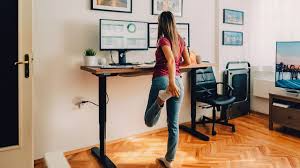Most of us don’t think twice about how we stand. We move through daily life, switching from task to task, rarely noticing the way our body holds itself in moments of stillness. But posture—especially when we’re just standing—is a subtle yet powerful reflection of how we live.
How you stand tells a story. It hints at your stress levels, your job habits, your energy, and even your personality. Whether your shoulders slump forward or your spine stacks tall, posture isn’t just a mechanical issue. It’s a signal. And it says more about you than you might think.
If you’re curious about how small, everyday behaviors reveal bigger truths about mindset, confidence, or control, you might want to click here to explore another context where subtle cues can shift outcomes in real-time.
Still Doesn’t Mean Neutral
The phrase “standing still” sounds neutral. Passive. Like something that requires no effort. But it’s not. Standing upright takes work. A surprising number of muscles engage just to hold you in place.
The way you stand—feet placement, spine alignment, hip tilt, neck angle—is a physical summary of what your body has learned to do most often. If you spend hours at a desk, your posture reflects that. If you’re constantly tense or rushing, that shows up too. And if you train your body regularly to stand with awareness, that shows as well.
Stillness reveals patterns. These patterns are shaped by everything from mood to movement history.
The Connection Between Posture and Lifestyle
Standing posture is one of the most underrated lifestyle indicators. It shows how much time you spend sitting, how well you sleep, how often you exercise, and even how you respond to pressure.
For example:
- People who sit for long periods without breaks often develop forward-leaning posture and rounded shoulders.
- Those under constant stress might clench their jaw or raise their shoulders without realizing it.
- Physically active people, especially those who stretch or lift, tend to carry themselves more evenly.
- Fatigue often shows through loose, slumped posture—sometimes more clearly than someone would ever admit out loud.
Posture is a form of quiet data. It gives away habits that are otherwise invisible.
Standing and the Nervous System
There’s also a neurological side to this. Your nervous system affects muscle tone, balance, and movement readiness. When you’re anxious or on edge, your body shifts into alert mode. This isn’t just mental—it’s physical. You stand differently when you’re ready to act versus when you’re relaxed.
The body and brain constantly talk to each other. Posture becomes the language they use. A slouched stance can reinforce low energy or low confidence. An upright posture can help shift attention or increase alertness. It’s not just the mind affecting the body—it goes both ways.
Cultural and Social Signals
Posture isn’t just physical or personal—it’s social too. How you stand influences how others perceive you, and sometimes, how you perceive yourself.
In group settings, people who stand tall often come across as more confident, even if they say nothing. Slouched or closed-off posture might be read as disinterest, even if the person is just tired. These snap judgments happen fast, often without us knowing we’re making them.
Culturally, posture expectations vary. In some environments, relaxed posture signals ease. In others, it’s seen as disrespect. But across the board, we all read body language, and posture is a big part of it.
Fixing Posture Isn’t Just About Looks
Many people think of posture correction as something purely cosmetic—standing straighter to “look better.” But the real benefits go deeper.
Improving posture can reduce chronic pain, improve circulation, support joint health, and even boost breathing. It helps you move more efficiently, waste less energy, and stay balanced under load.
But more than that, practicing good posture means becoming aware of your body. Noticing how you stand is a form of presence. And in today’s hyper-distracted world, that’s no small thing.
Awareness First, Change Second
You don’t need perfect posture. That doesn’t exist. What matters is awareness.
Start noticing how you stand when you’re waiting, when you’re stressed, or when you’re doing nothing at all. These moments show you where your habits live.
From there, change can be gradual. You might take movement breaks during the day, stretch a bit more, or do breathing exercises to relax tension in your upper body. It doesn’t need to be a full overhaul. Just a few small shifts can change how you feel.
Final Thoughts
Standing still isn’t idle. It’s active. And the way you do it holds clues about how you live, think, and move.
Posture reflects lifestyle—not just what you do with your body, but how you carry the weight of your habits. It’s not just about form. It’s feedback.
So next time you’re waiting in line or standing at your desk, take a second. Tune in. Your body might be telling you more than you think.
